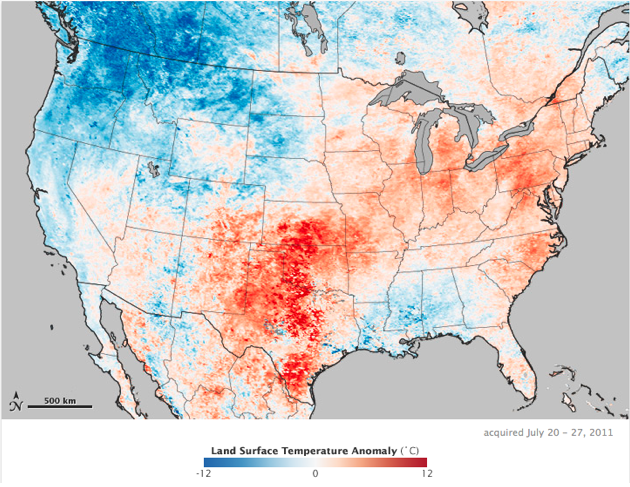Fall 2011: An introduction
By Laura Poppick, Assistant Editor
The summer of 2011 was the second warmest summer on record in the U.S. and pummeled Maine with a basketful of climatic anomalies. A late-July heat wave soaked the southern part of the state in 100-degree temperatures for the first time in more than 35 years. The winds and floods of Hurricane Irene, while not as destructive as elsewhere, made this the third wettest August on record in Maine and eroded farmland across Franklin and Oxford counties (Crops hit hard by Irene in Franklin, Oxford counties, August 30, 2011, Sun Journal), uprooting many newly ripened apple trees and other crops.

Still, many blueberry fields (Maine farmers hope wild blueberry crop will command higher prices, September 5, 2011, Bangor Daily News) recovered well from a July drought and, despite setbacks from Irene, apple yields (Maine apple orchards ‘are producing like crazy’, September 9, 2011, Bangor Daily News) are flourishing and may be more abundant this year than ever before. Such promising resilience arises from the natural hardiness of Maine crops and the thoughtful management regimes of Maine farmers adapting to increasingly frequent climatic challenges.
This summer also held promising advancements in a national movement (U.S. cities try to adapt to climate change, August 16, 2011, USA Today) to help communities adapt to climate change. The National Weather Service launched an initiative to build a ‘weather-ready‘ nation by improving weather prediction technology and drafting local plans to prepare for extreme weather events. Federal, state, and tribal agencies also made headway on the National Fish, Wildlife, & Plants Adaptation Strategy, which will provide a “framework for cooperative response” to climate-related changes in national natural resources by the end of the year.
As policymakers convene and develop adaptation strategies for climate change, animals are already implementing non-verbal adaptations to climate change that scientists are working hard to decode. In this issue of Maine Climate News, we speak with ornithologists from across the state exploring how migratory birds may adapt to climatic anomalies in Maine. We spotlight the Atlantic puffin in Climate Highlights: Climate Change and Bird Migration in Maine and the common loon in Research Highlights: Tracking Changes in Maine Loon Populations, contributed by University of Maine graduate student Allie Byrd.
Check back throughout the season for regular blog posts on the Maine Climate News Blog about cutting-edge climate research, and feel free to send along climate-related questions to Ask the Climatologist.
Enjoy the crisp winds and colors of fall!
